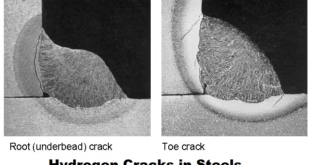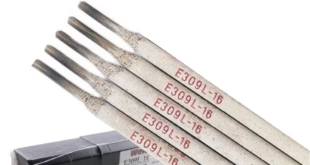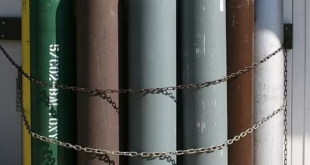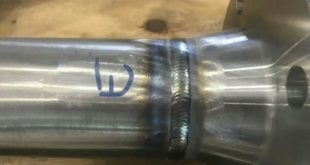3G 3F Welding Position
Introduction
Welding is an essential skill in many industries, and mastering different welding positions is crucial for any welder. Among the various welding positions, 3G and 3F are commonly used and highly valued. In this article, we’ll explore what 3G and 3F welding positions are, their applications, techniques, and how to excel in these positions. Whether you’re a beginner or an experienced welder, understanding these positions will enhance your welding capabilities and open up more opportunities in your career.
What is 3G Welding Position?
The 3G welding position refers to a vertical groove weld where the welder welds vertically up or down. The “G” stands for groove, which means the weld is performed on a vertical joint with a groove preparation. This position is widely used in structural welding and is essential for projects involving beams and columns.

image Credit:millerwelds.com
Applications of 3G Welding:
- Structural steel welding
- Construction of buildings and bridges
- Pipeline welding
Advantages of 3G Welding:
- Provides strong and reliable welds
- Essential for structural integrity
- Allows for welding in difficult positions
What is 3F Welding Position?
The 3F welding position involves a vertical fillet weld. The “F” stands for fillet, indicating that the weld is performed on a vertical joint with a fillet preparation. This position is often used in fabrication and manufacturing, particularly for welding brackets and supports onto vertical surfaces.
Applications of 3F Welding:
- Manufacturing and fabrication
- Automotive and shipbuilding industries
- Repair and maintenance welding
Advantages of 3F Welding:
- Easier to perform than groove welds
- Versatile for various applications
- Provides strong joints for non-structural components
Differences Between 3G and 3F Welding Positions
While both 3G and 3F positions involve vertical welding, they differ in terms of joint type and application. The 3G position is used for groove welds, which are essential for structural integrity. In contrast, the 3F position is used for fillet welds, which are common in fabrication and non-structural applications.
Positional Differences:
- 3G: Vertical groove weld
- 3F: Vertical fillet weld
Techniques and Methods:
- 3G requires precise control and technique to ensure penetration and fusion.
- 3F is generally easier and more forgiving, making it suitable for beginners.
Suitability for Projects:
- 3G is ideal for structural projects requiring strong, reliable welds.
- 3F is suitable for fabrication and non-structural components.
Techniques for 3G Welding Position
Equipment and Materials Needed:
- Welding machine (MIG, TIG, or Stick)
- Appropriate electrodes or filler wire
- Personal protective equipment (PPE)
Step-by-Step Process:
- Prepare the joint by cleaning and beveling the edges.
- Set up the welding machine with the correct settings for the material and electrode.
- Start welding from the bottom, moving upwards in a zigzag or weaving motion.
- Ensure proper penetration and fusion by maintaining a consistent travel speed.
- Inspect the weld for any defects and make necessary corrections.
Common Challenges and Solutions:
- Porosity: Ensure proper shielding gas coverage and clean the joint thoroughly.
- Lack of Fusion: Adjust the travel speed and electrode angle to improve penetration.
Techniques for 3F Welding Position
Equipment and Materials Needed:
- Welding machine (MIG, TIG, or Stick)
- Appropriate electrodes or filler wire
- Personal protective equipment (PPE)
Step-by-Step Process:
- Prepare the joint by cleaning the surfaces to be welded.
- Set up the welding machine with the correct settings for the material and electrode.
- Start welding from the bottom, moving upwards in a straight or slightly weaving motion.
- Maintain a consistent travel speed and electrode angle to ensure proper fusion.
- Inspect the weld for any defects and make necessary corrections.
Common Challenges and Solutions:
- Undercut: Reduce the heat input and adjust the travel speed.
- Overlap: Ensure proper electrode angle and maintain a consistent speed.
Safety Measures for 3G and 3F Welding Positions
Importance of Safety in Welding: Welding can be hazardous if proper safety measures are not followed. Ensuring safety not only protects the welder but also enhances the quality of the welds.
Specific Safety Tips for 3G Welding:
- Use appropriate PPE, including gloves, helmet, and protective clothing.
- Ensure proper ventilation to avoid inhaling harmful fumes.
- Secure the workpiece to prevent movement during welding.
Specific Safety Tips for 3F Welding:
- Use appropriate PPE, including gloves, helmet, and protective clothing.
- Ensure the work area is free from flammable materials.
- Use clamps or fixtures to hold the workpiece in place.
Common Mistakes and How to Avoid Them
Mistakes in 3G Welding and Solutions:
- Incorrect Angle: Practice maintaining the correct electrode angle.
- Inconsistent Speed: Develop a steady hand and consistent movement.
Mistakes in 3F Welding and Solutions:
- Insufficient Fusion: Ensure proper heat input and electrode angle.
- Excessive Spatter: Adjust the settings and clean the joint properly.
General Tips for Improving Welding Quality:
- Practice regularly to develop steady hand movements.
- Inspect and clean the joint before welding.
- Use the correct settings and equipment for the material and position.
FAQs
What is the main difference between 3G and 3F welding positions?
The main difference lies in the type of joint and application: 3G is a vertical groove weld, while 3F is a vertical fillet weld.
Can a beginner welder start with 3G or 3F positions?
Yes, beginners can start with 3F positions as they are generally easier. 3G positions require more skill and practice.
What type of welding is best suited for 3G and 3F positions?
MIG, TIG, and Stick welding are commonly used for both 3G and 3F positions, depending on the material and project requirements.
How can I improve my skills in 3G and 3F welding positions?
Practice regularly, seek feedback from experienced welders, and continually refine your technique and settings.
Are there specific certifications required for 3G and 3F welding positions?
Yes, there are certifications such as the AWS (American Welding Society) certifications that validate a welder’s proficiency in 3G and 3F positions.
Conclusion
Mastering the 3G and 3F welding positions is essential for any welder aiming to excel in their field. These positions offer unique advantages and are crucial for various applications, from structural welding to fabrication. By understanding the techniques, equipment, and safety measures involved, you can improve your welding skills and produce high-quality welds. Remember, practice and attention to detail are key to becoming a proficient welder.
 Welding of Welders All about Welding and Welders
Welding of Welders All about Welding and Welders



